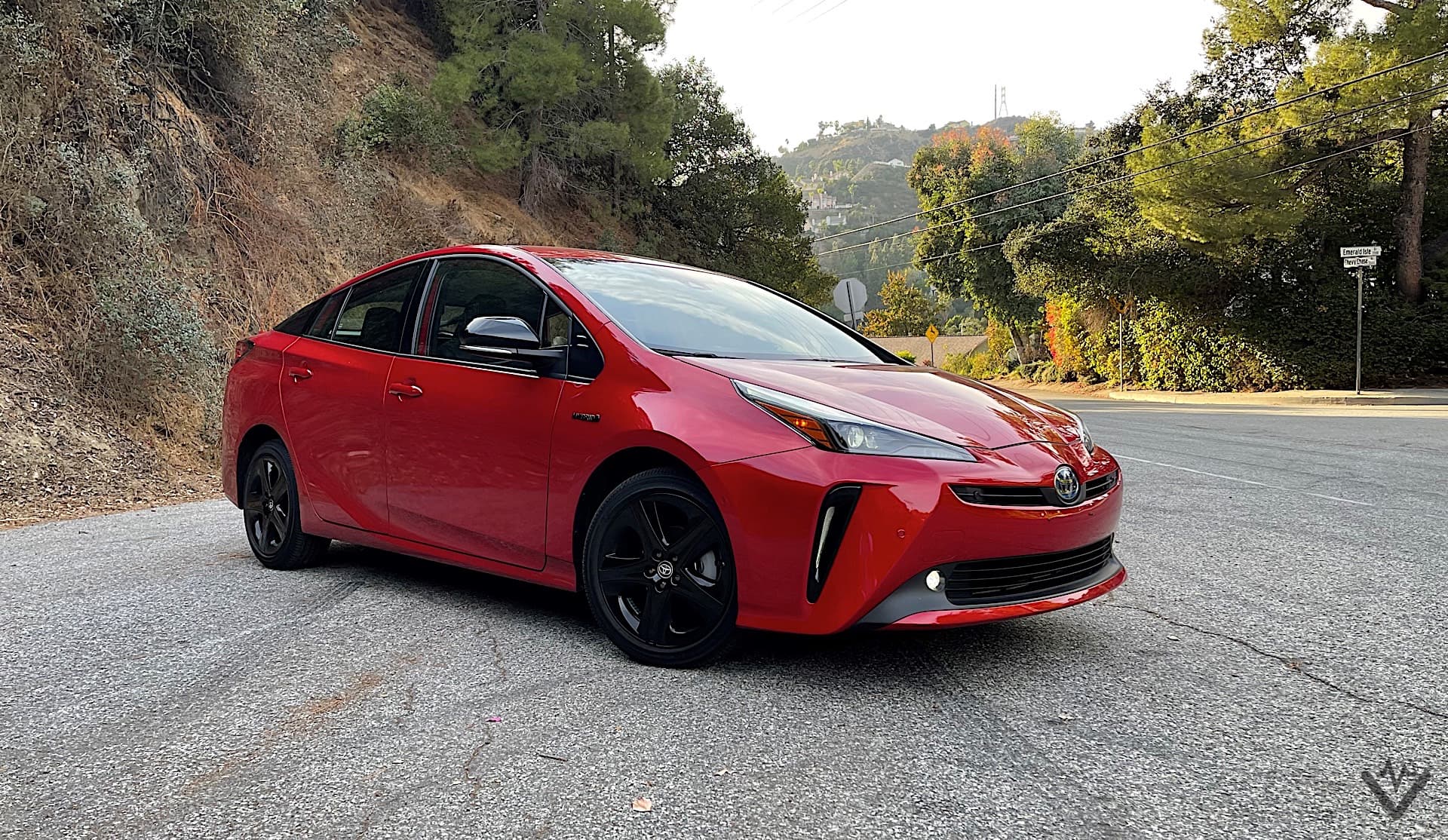Hey you! Are you looking at buying an electrified vehicle but are scared of going all out with an EV or don’t have a plug nearby to take advantage of a plug-in hybrid? Why don’t you check out the 2021 Toyota Prius? A practical hatchback with excellent fuel economy and comfortable seating for four adults, the Prius remains a viable choice, especially for consumers living in areas where outlets or charging stations aren’t readily available.
2021 Toyota Prius exterior
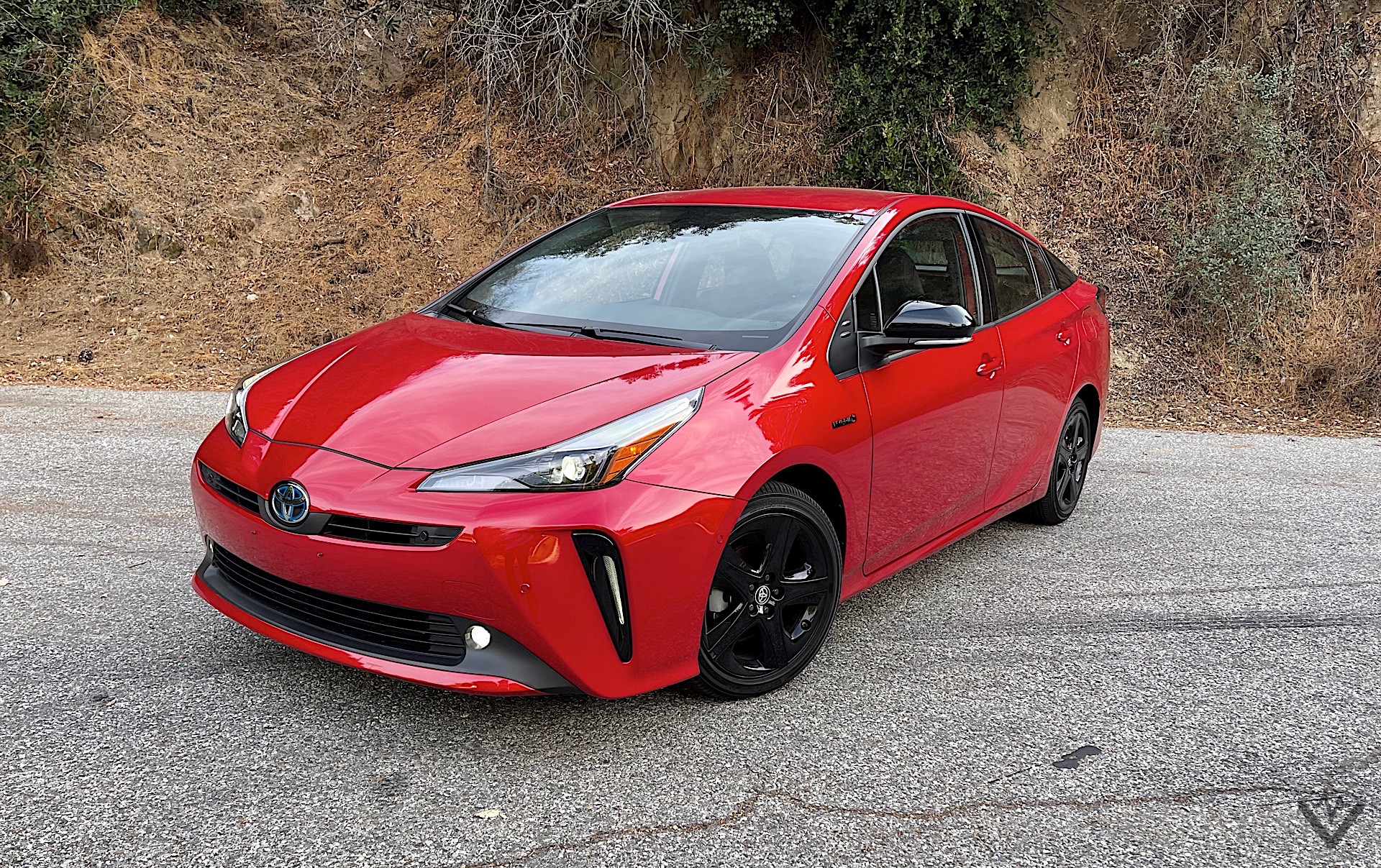
The current generation Prius’ exterior design has been a point of controversy ever since the fourth-generation car arrived for the 2016 model year. Toyota softened up the looks as part of the 2019 refresh, giving it squared taillights and reshaped headlights that don’t stretch down to the lower front fascia. Even with these changes, the Prius’ design remains a love it or hate it affair, especially in bright colors like our Supersonic Red test vehicle.
2021 Toyota Prius: Differences versus the Prius Prime
Unlike the plug-in Prius Prime, the standard Toyota Prius is differentiated by several factors. For starters, it has a smaller 1.2 or 0.75 kWh battery under the rear seats. As a result, the standard Prius has 24.6 to 27.4 cubic feet of cargo space with the rear seats up versus the Prime’s 19.8 cubic feet. There’s also an AWD version for the LE and XLE grades, which adds a 7 hp electric motor on the rear axle. Even the battery type is different; FWD variants get a lithium-ion unit while AWD models get a nickel-metal-hydride one. Certain trims like the 2020 Special Edition example also get wider 215/45R17 tires on 17-inch alloy wheels
2021 Toyota Prius interior and infotainment
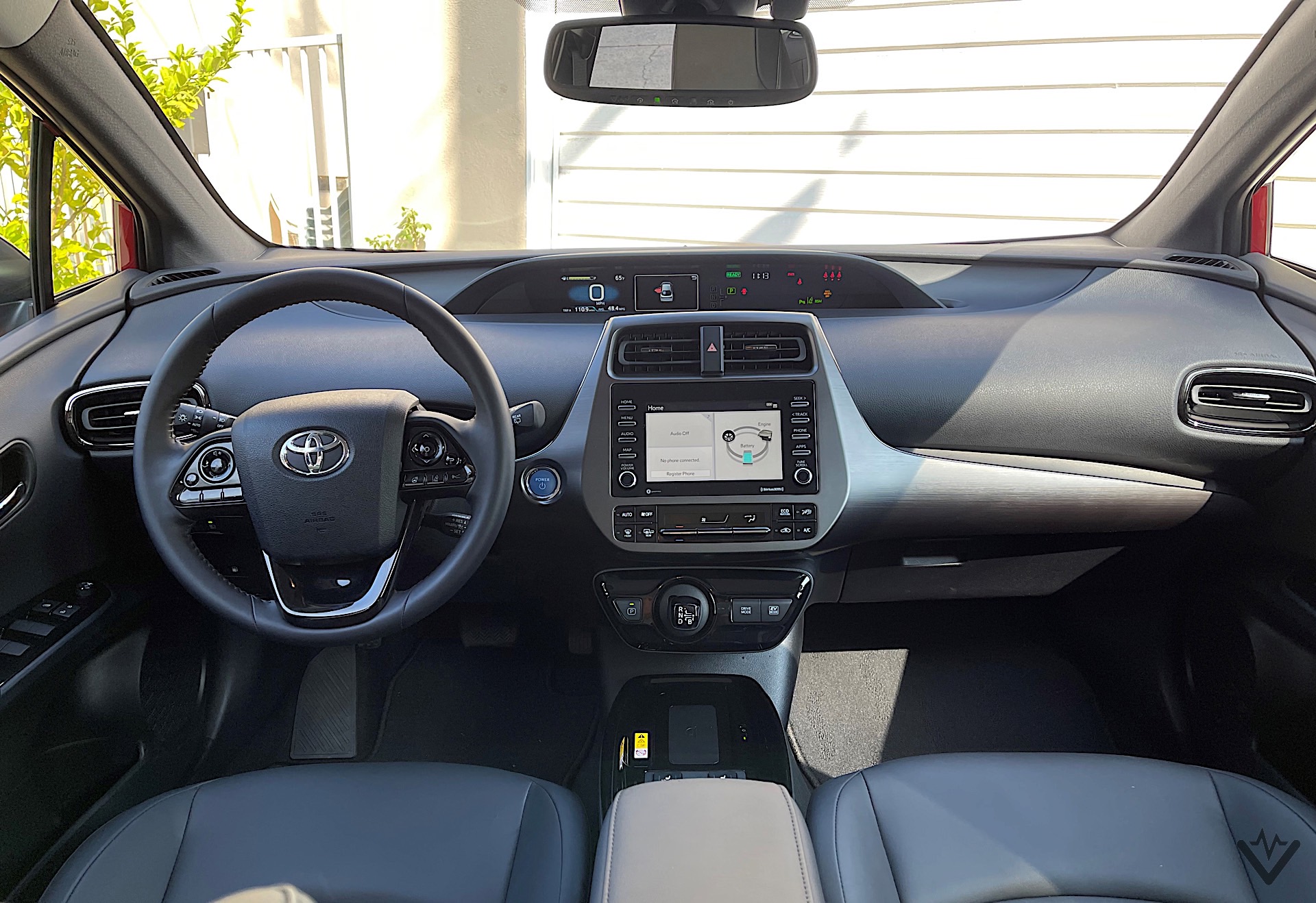
There are two versions of Toyota’s Entune multimedia interface found in the Prius. The 2020 Edition model, which is based on the non-plug-in XLE, gets the standard 7.0-inch touch screen with Apple CarPlay and Android Auto integration. Unlike the larger 11.6-inch unit found on the Limited trim, this version retains the volume and tuning knobs, and physical shortcut buttons, making it more user-friendly. However, a quicker responding touch screen would further improve overall usability. Otherwise, the material quality is similar between the regular and Prime models and you get similar amounts of exterior noise entering the cabin.
2021 Toyota Prius driving impressions
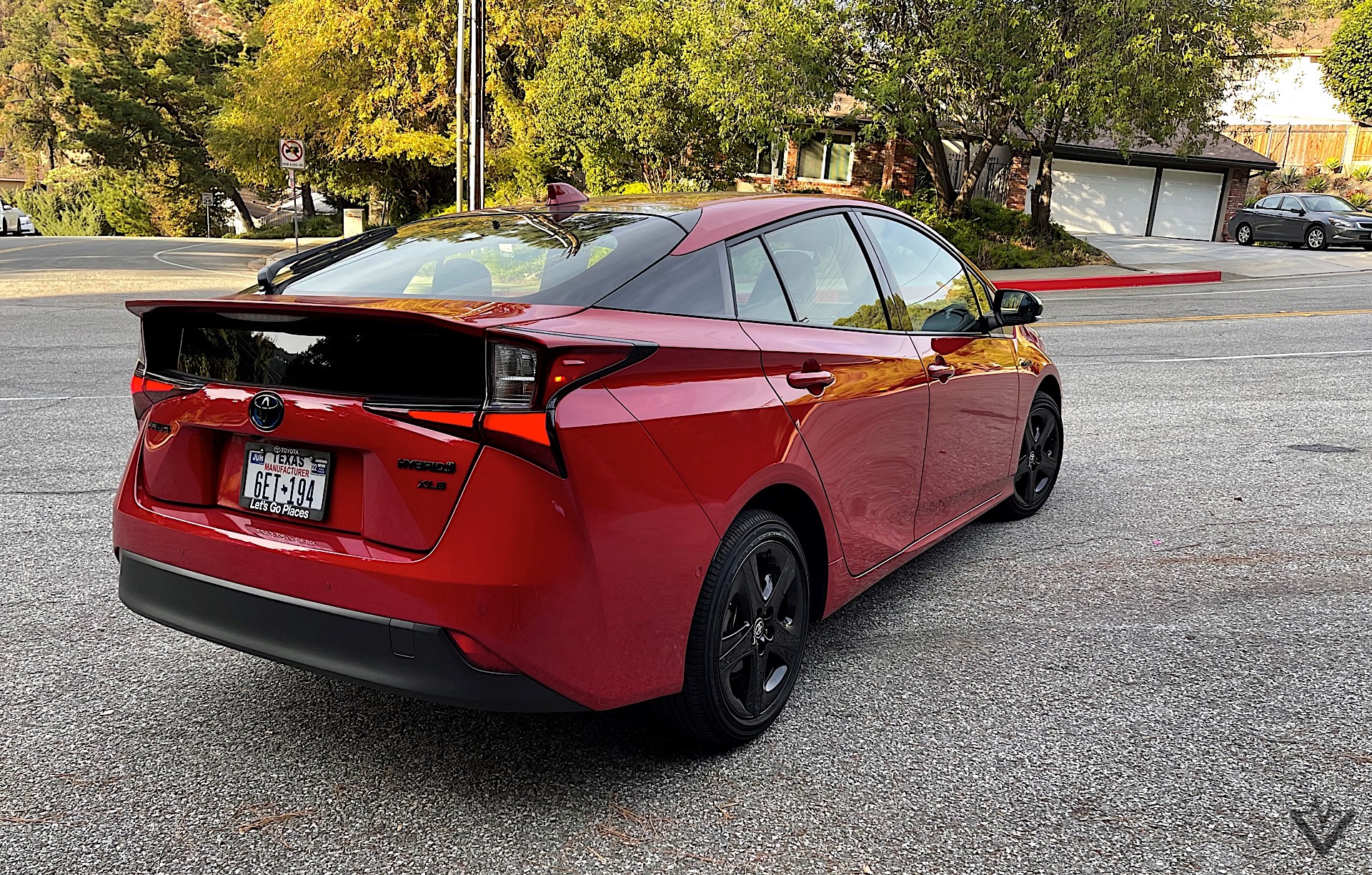
Out on the road, you’ll immediately notice that the standard Toyota Prius doesn’t operate like its plug-in sibling. The 121 hp hybrid system is the same 1.8-liter I 4 coupled to two electric motors, a battery, and a planetary gear set. However, the non-plug-in uses the gas engine more often for motivation. Stepping on the accelerator to pass slower traffic, merge or climb a hill immediately turns the gas engine on, something that the Prius Prime rarely needs to do because of its larger 8.8 kWh battery.
The rest of the driving experience differs slightly if you choose a Prius with the available 17-inch alloy wheels. You get a little more grip due to the wider tires but the trade-off is a bit more road and tire noise on the highway, which is especially noticeable when the car is coasting with the engine off. The ride remains compliant over rough pavement despite the wider contact patches. On twisty roads, the Prius stays composed; there’s good body control and the car never feels unruly when you have to suddenly make an evasive maneuver. Like the Prius Prime, the steering could be a little quicker because you can tell there’s a very slight delay between you turning the steering wheel and the front wheels reacting.
Like the Prius Prime, the standard 2021 Prius offers a generous list of standard features including Toyota Safety Sense 2.0. That expands on the previous driver assistance suite with lane centering, steering assist, and stop and go function for adaptive cruise control. The systems work subtly but adaptive cruise control could be tuned less conservatively; it leaves too much room between you and the vehicle ahead in its closest setting, allowing others to cut you off.
2021 Toyota Prius pricing
Our test vehicle was the 2021 Toyota Prius 2020 Edition, a limited production model based on the XLE trim. It commemorates the Prius’ 20th anniversary and will be limited to 2,020 units. This example costs $31,295 including the $995 destination fee. Unlike the Prius Prime, the standard Prius isn’t eligible for special state incentives and federal tax credits.
2021 Toyota Prius final verdict
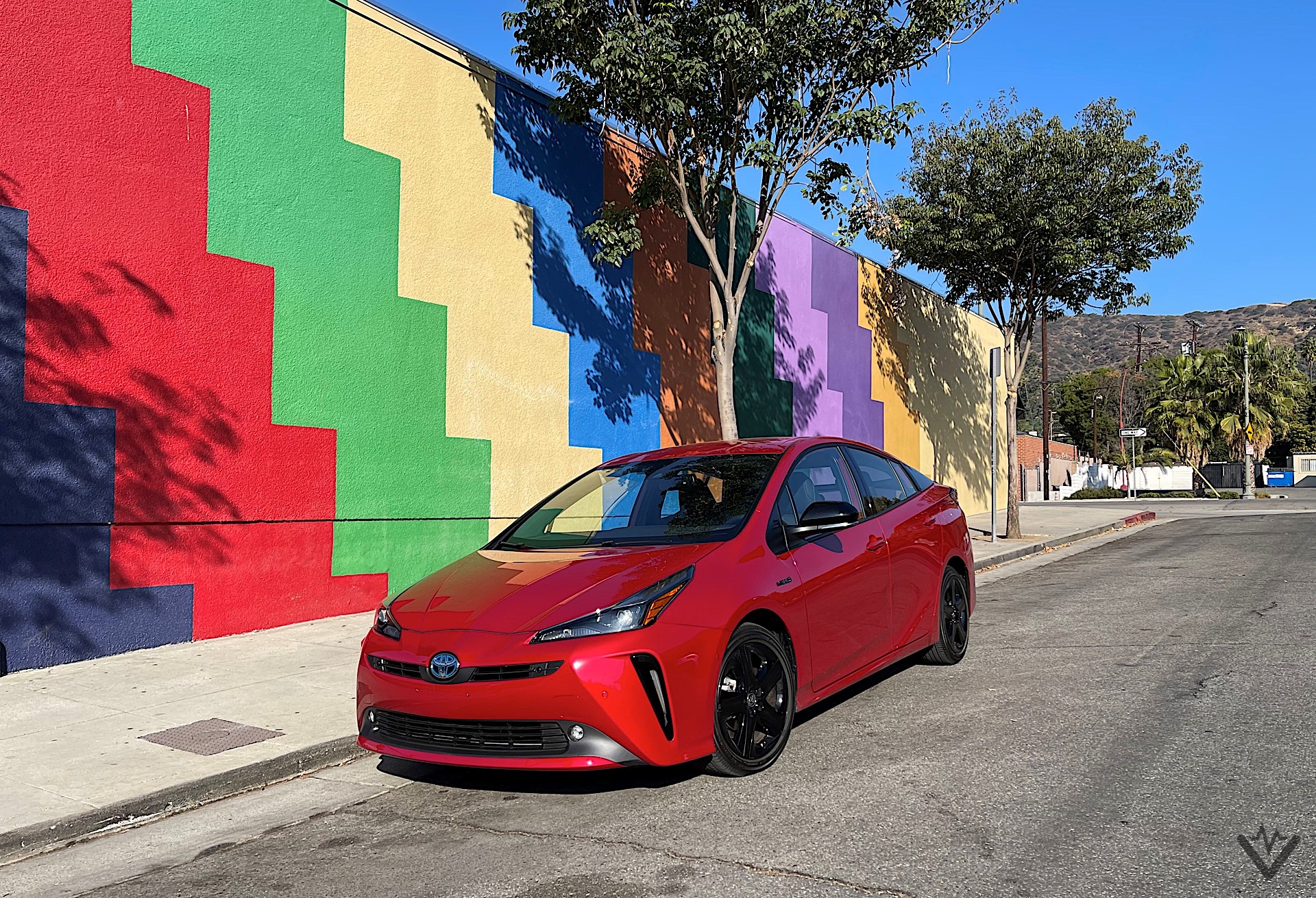
The conventional Toyota Prius is easier to fit in your life if you can’t take full advantage of a plug-in hybrid or an EV. A pleasant driving experience, lots of space, and stellar fuel economy all contribute to its appeal. Sure, it may not be as miserly or hip as a vehicle with a plug but it remains a viable option for those who aren’t able to access any type of infrastructure supporting its chargeable counterparts. Additionally, the Prius is one of the most approachable hybrids on the market regardless of the version because they’re so easy to live with. Once you get past the divisive looks, you’ll find this eco-friendly icon quite compelling as your first electrified set of wheels.
At a glance
- Year: 2021
- Make: Toyota
- Model: Prius
- Trim Level: 2020 Edition
- Type: 4-Door sedan/hatchback
- Combined horsepower: 121
- MPG ratings: 54/50/52 mpg city/highway/combined (L Eco: 58/53/56 mpg; AWD: 51/47/49 mpg)
- Pros: Spacious interior, comfortable ride
- Cons: Slow infotainment system, interior could be quieter
- Base: $25,520
- Price as tested: $31,295
